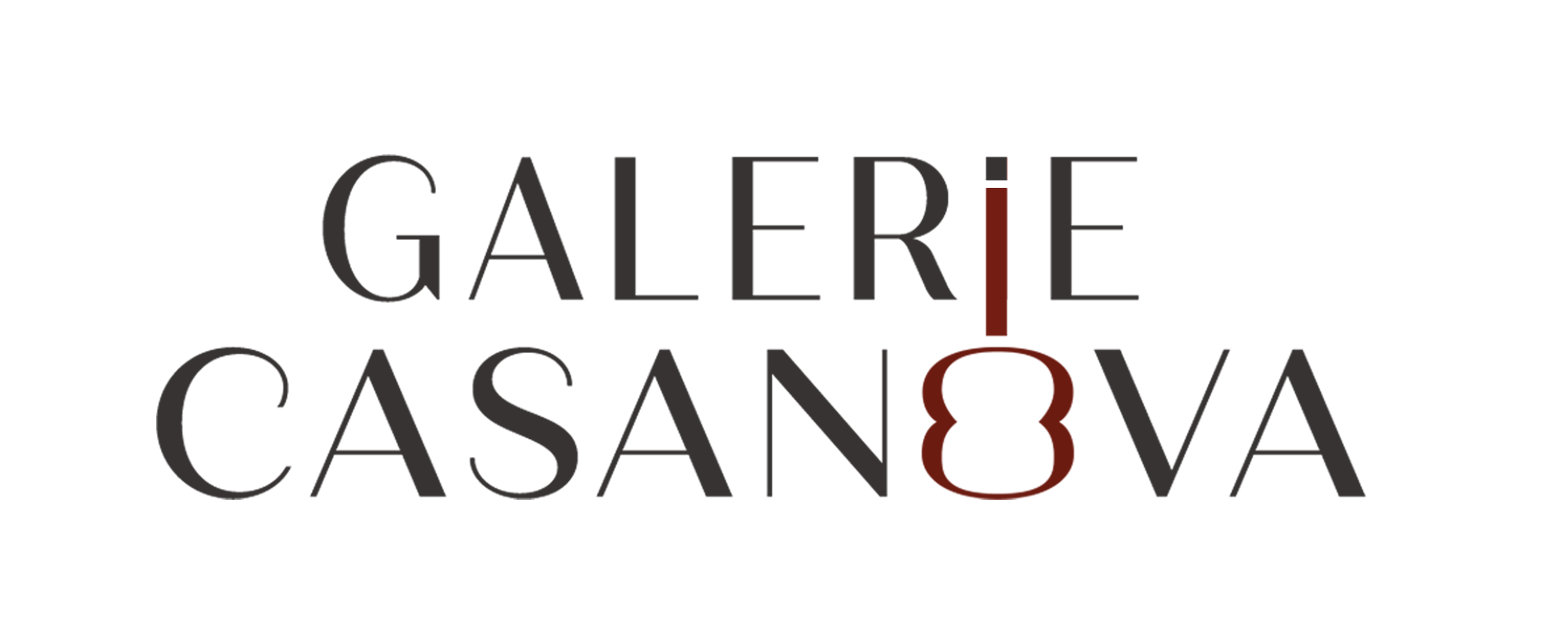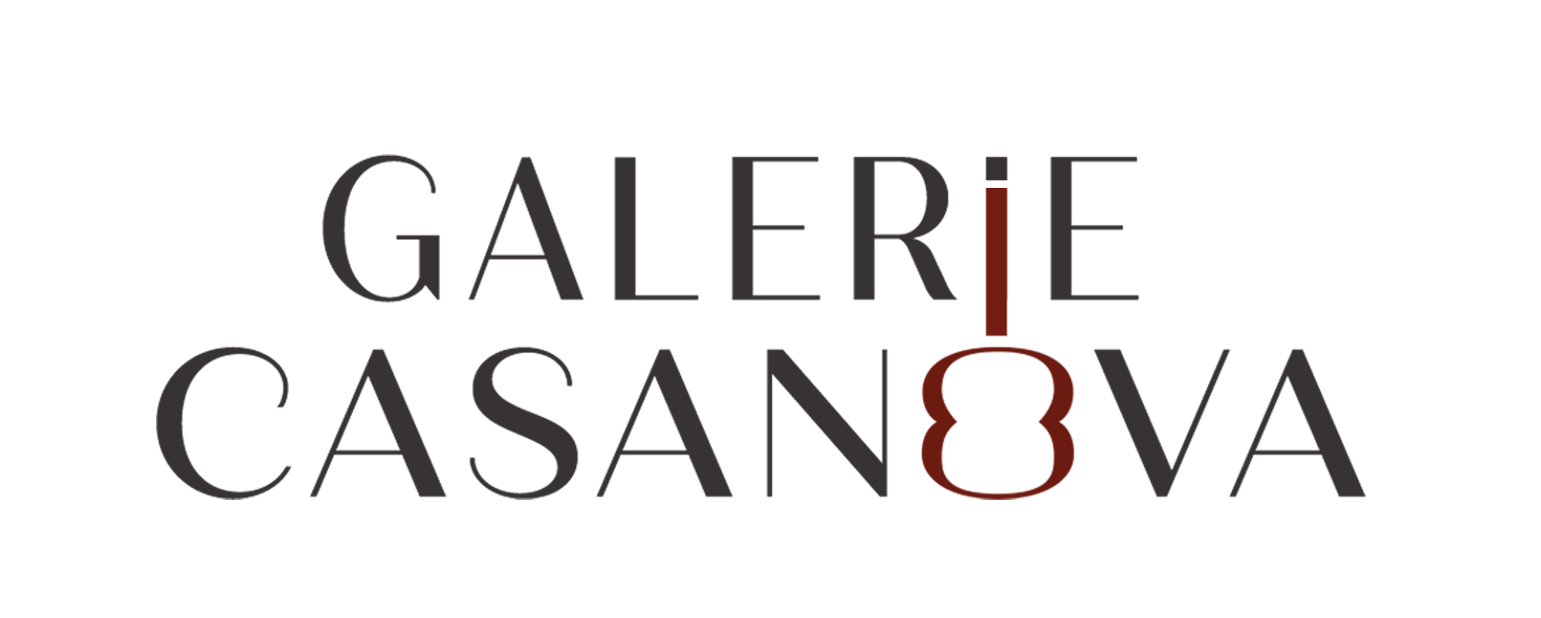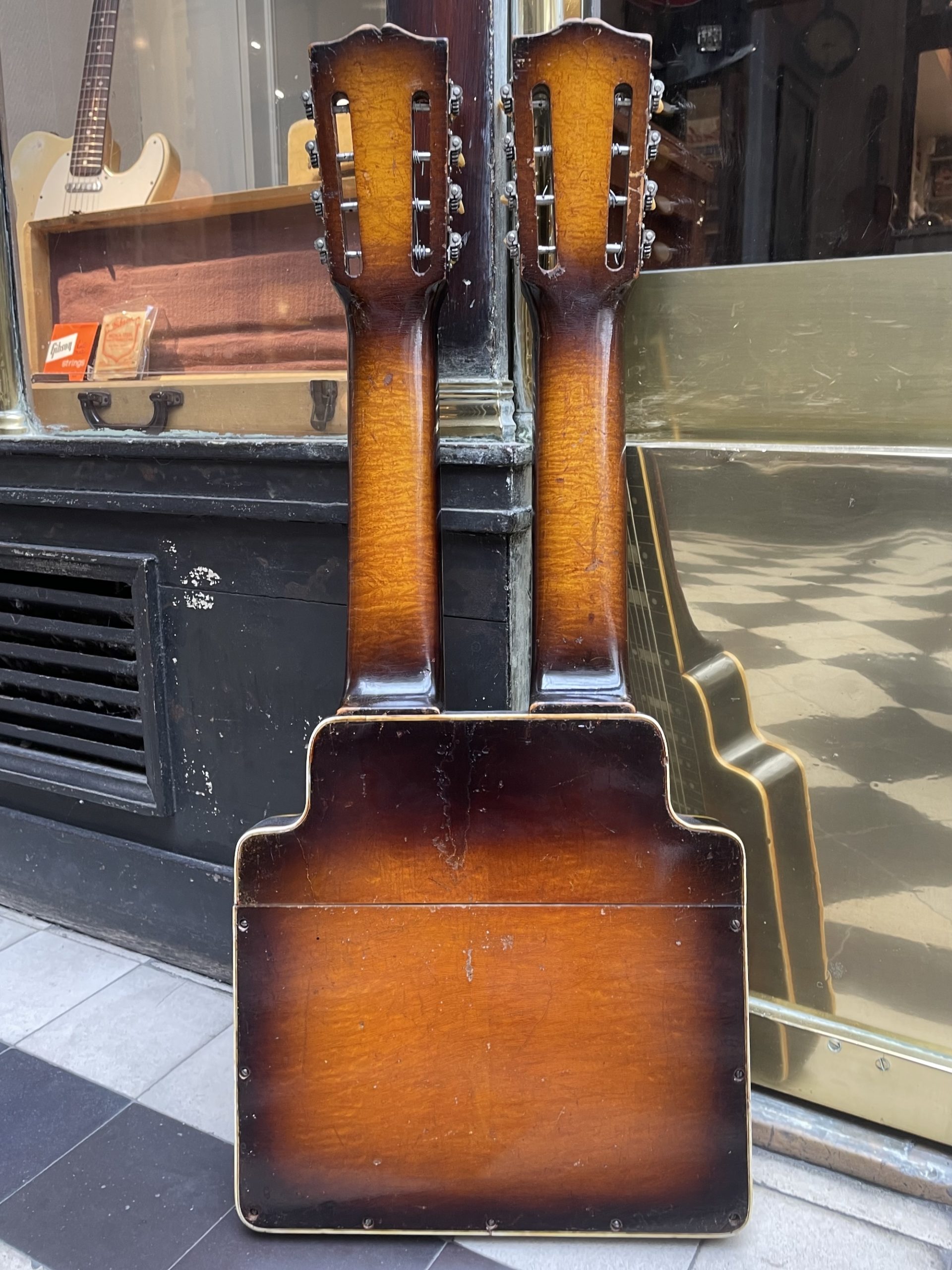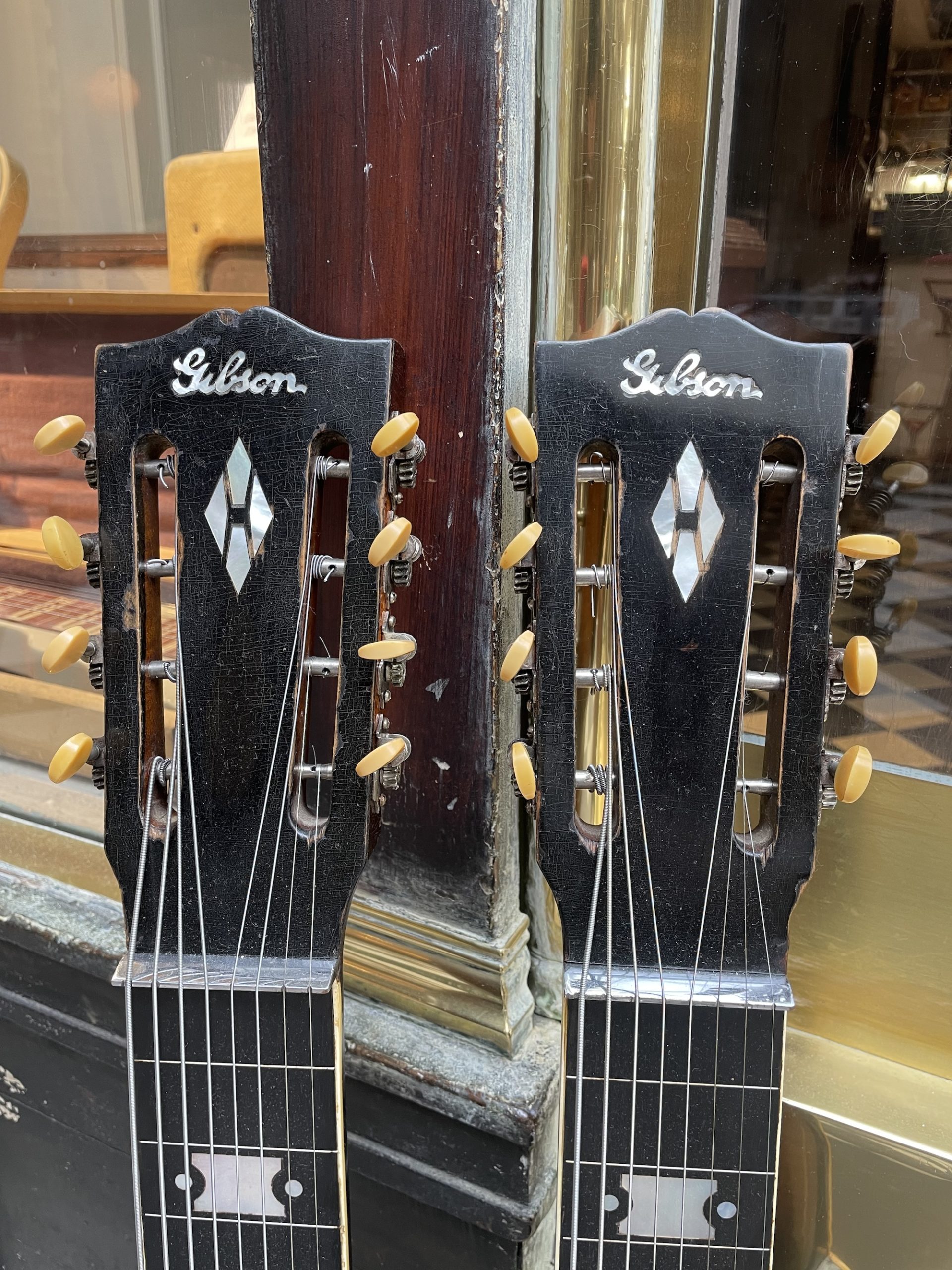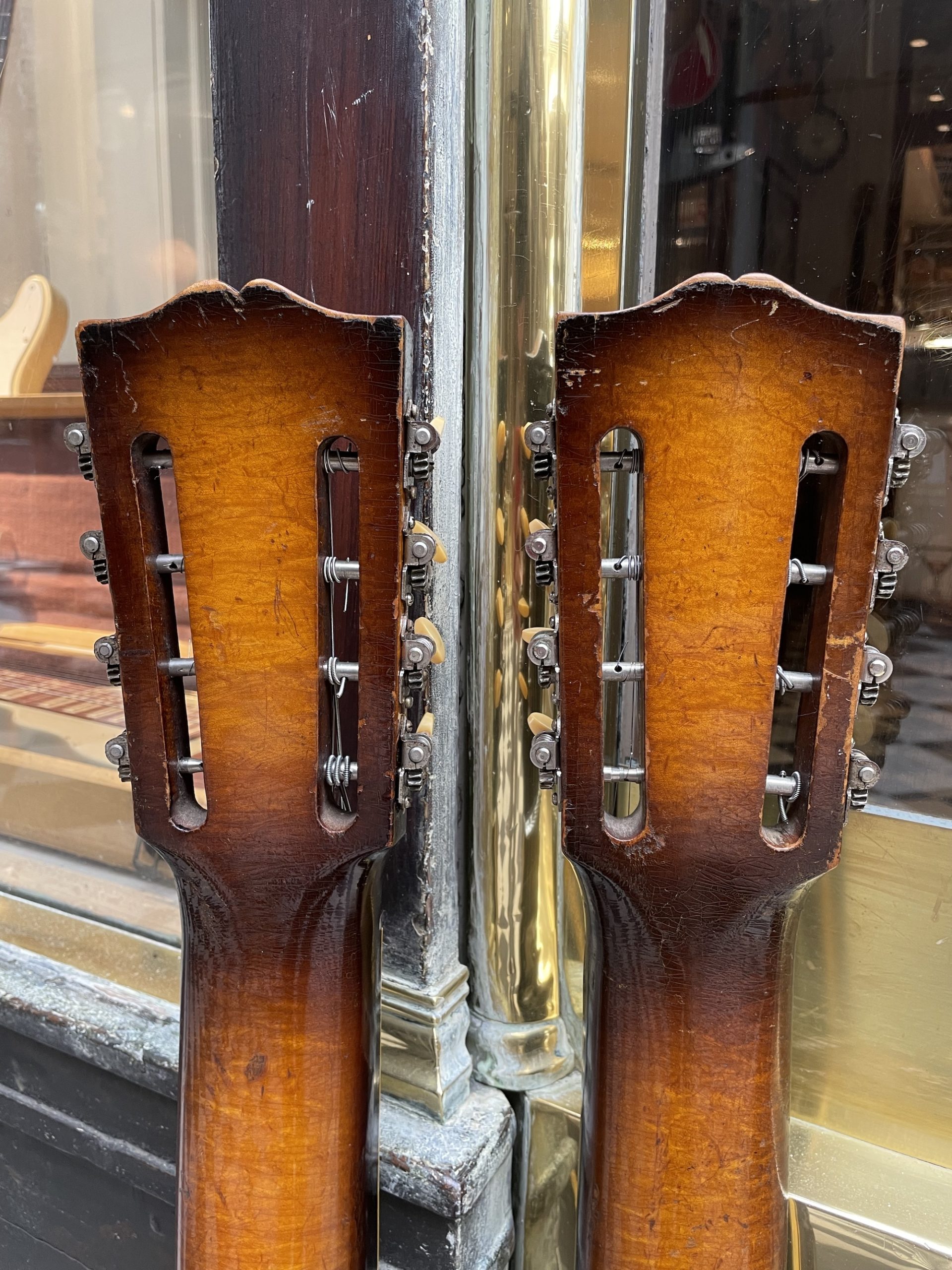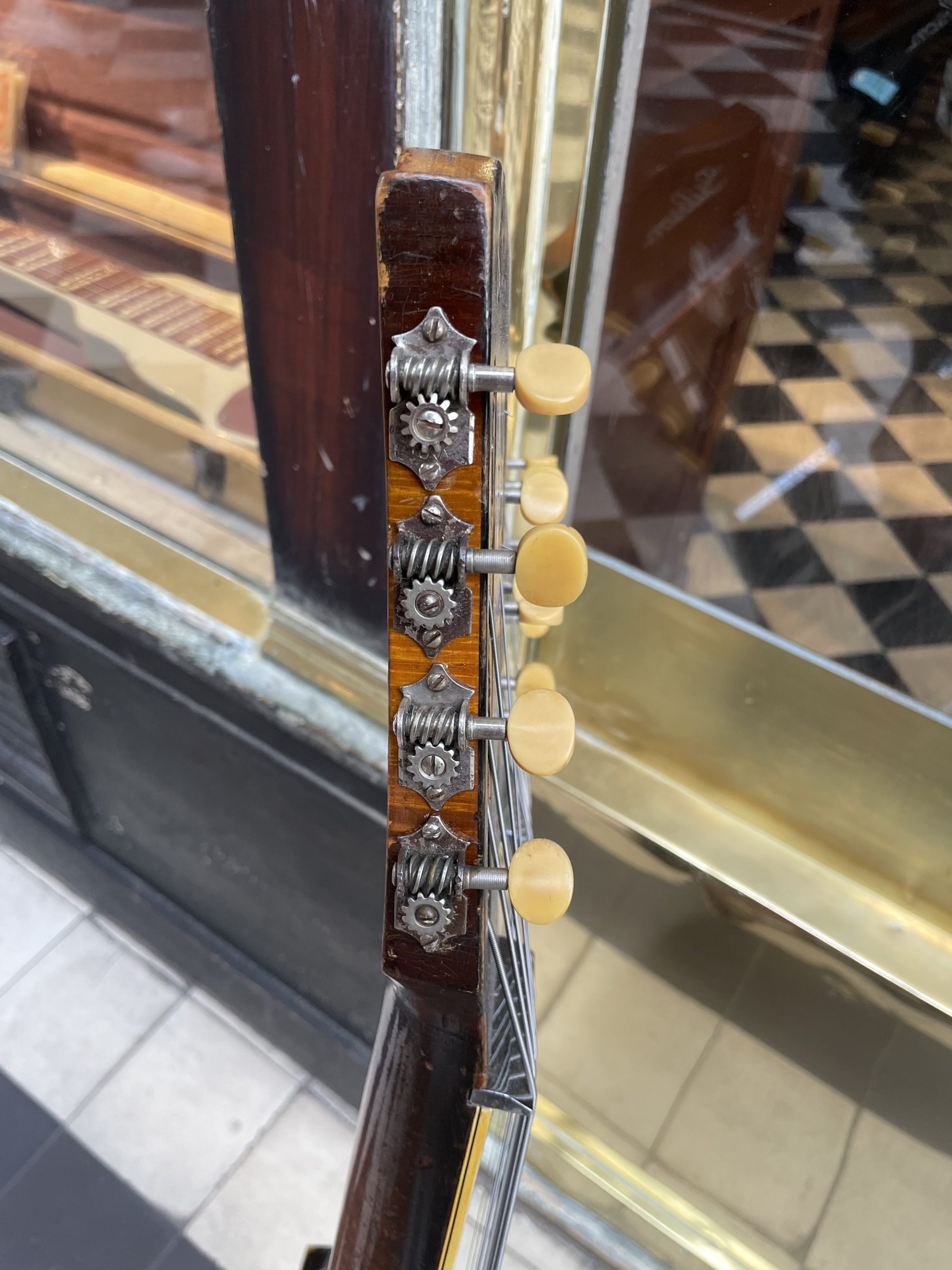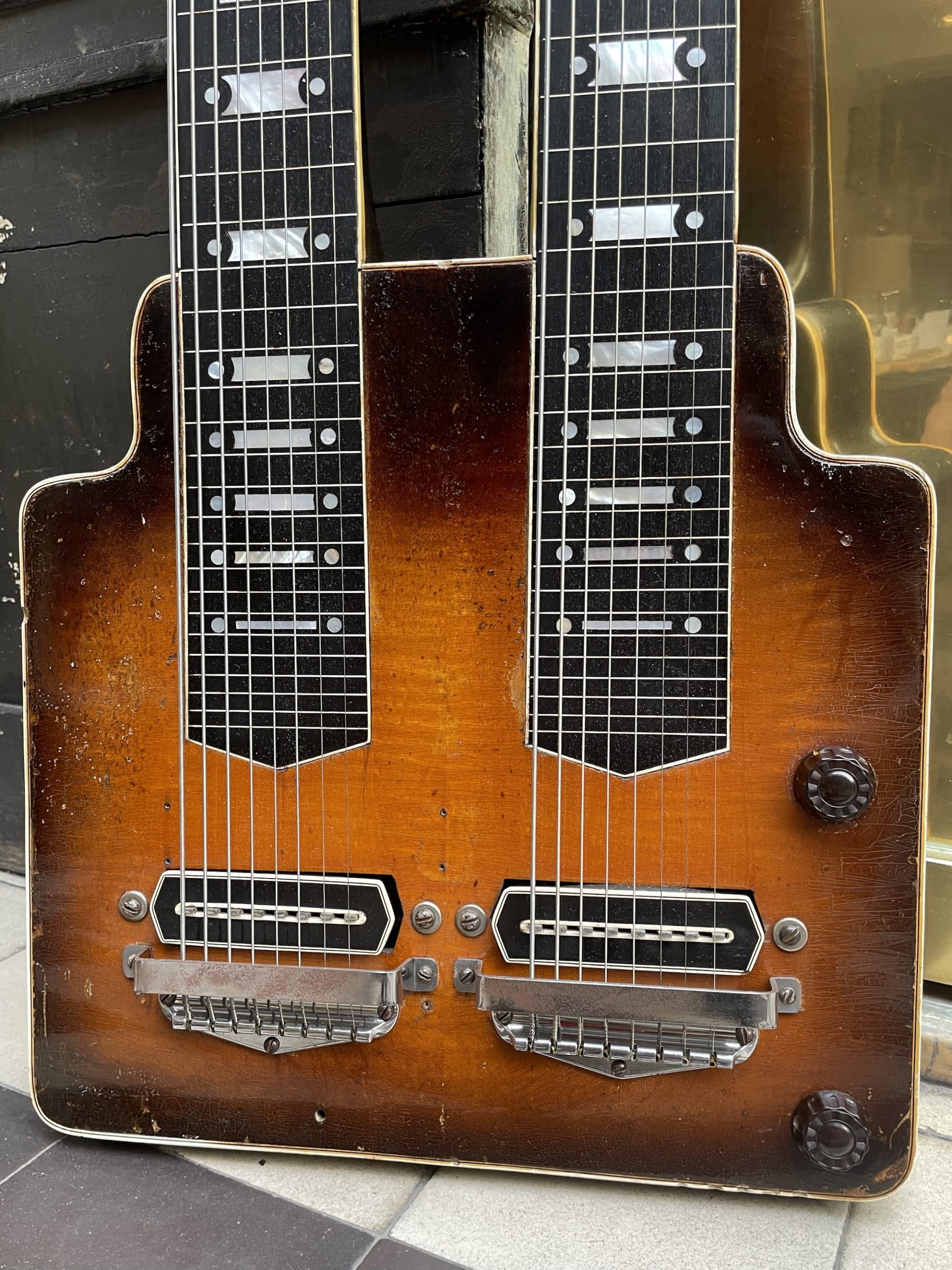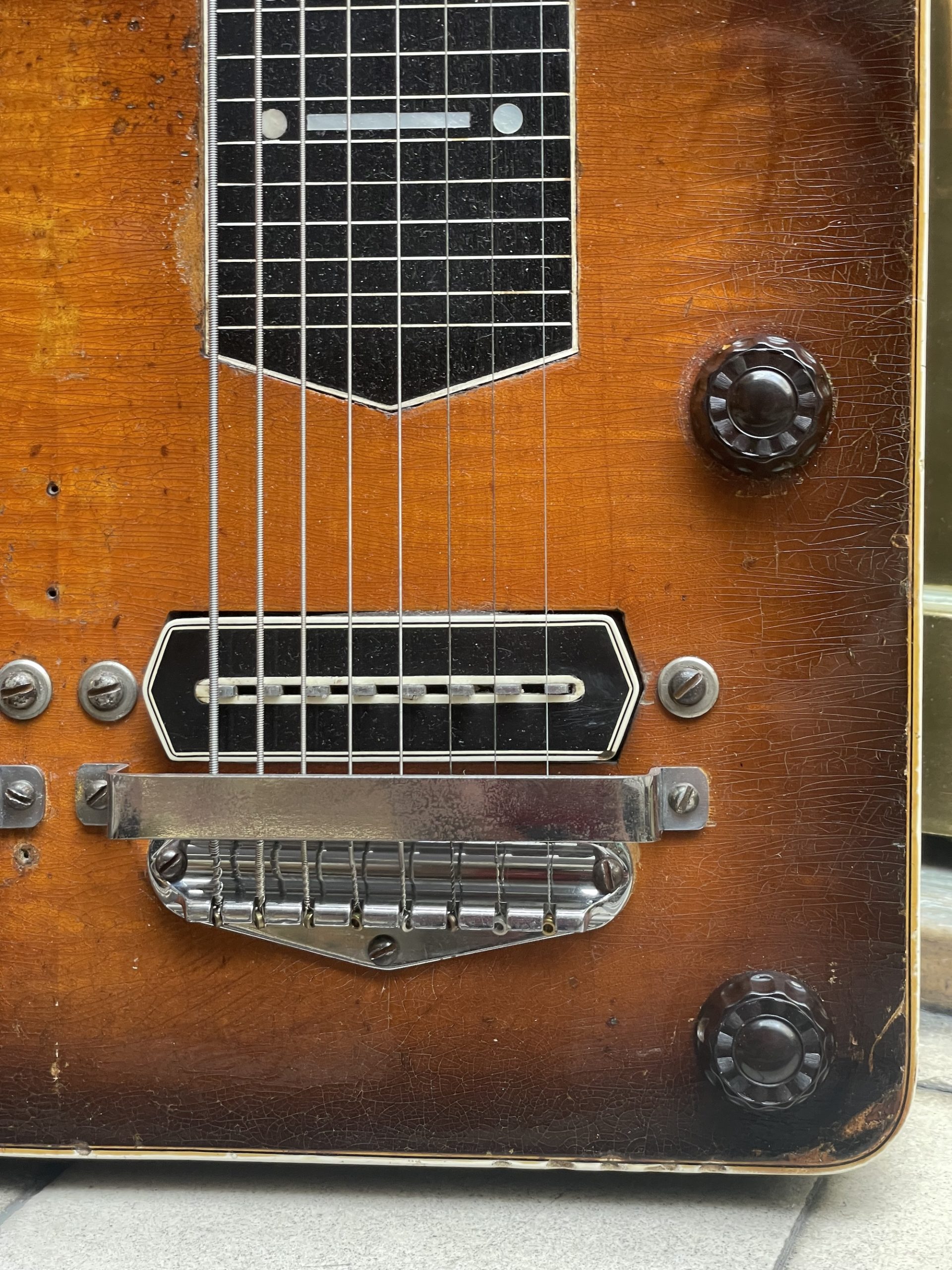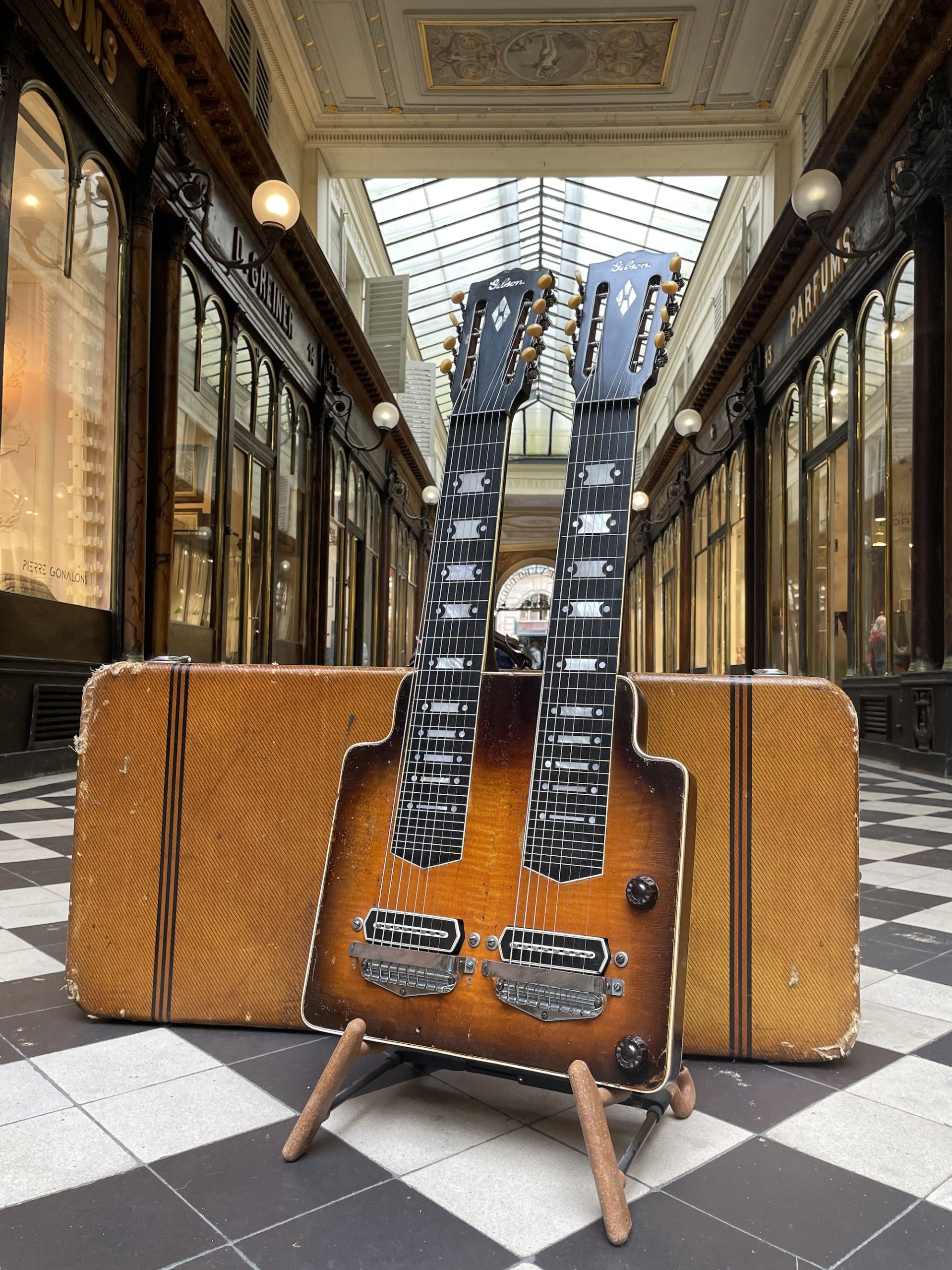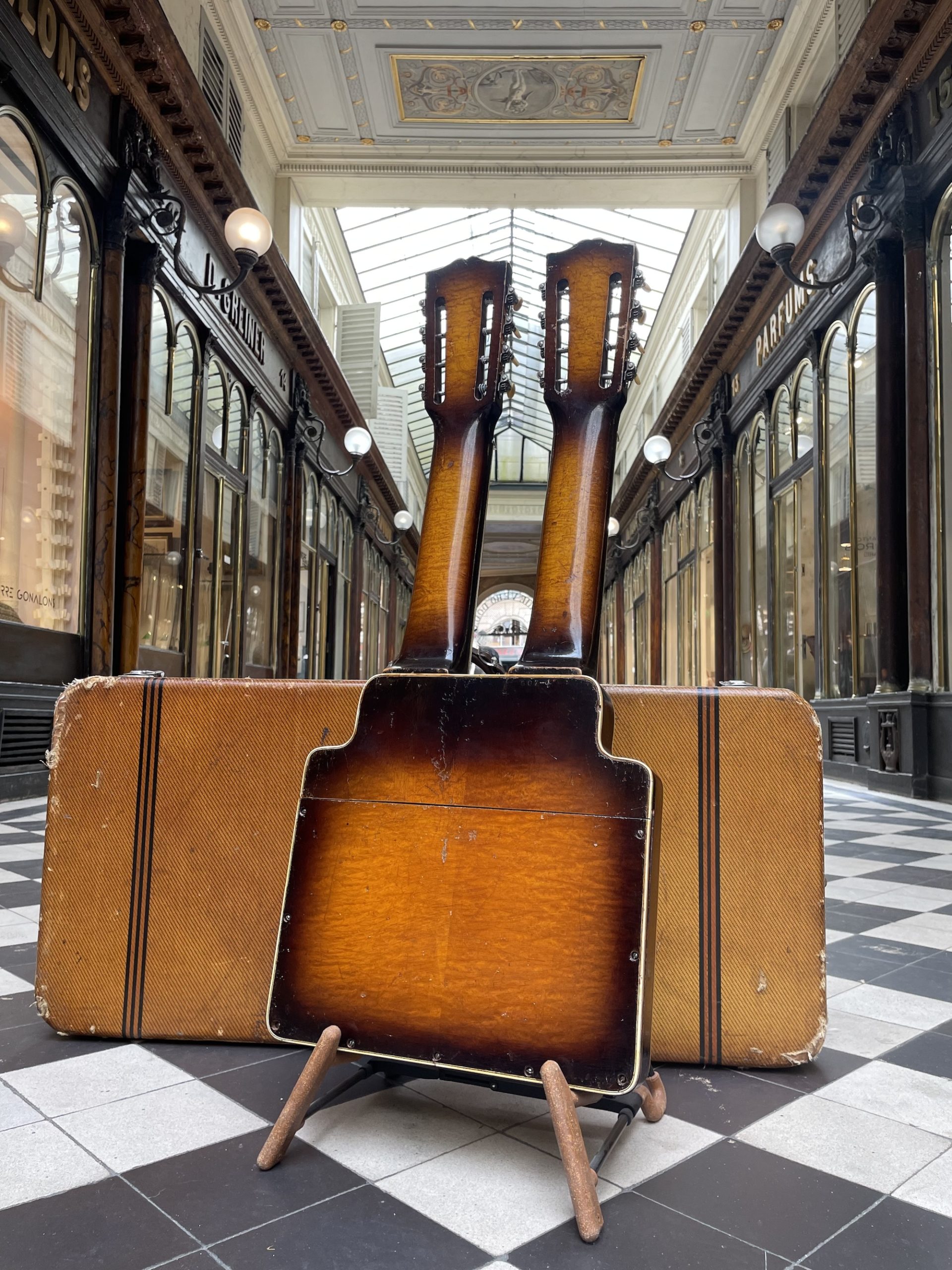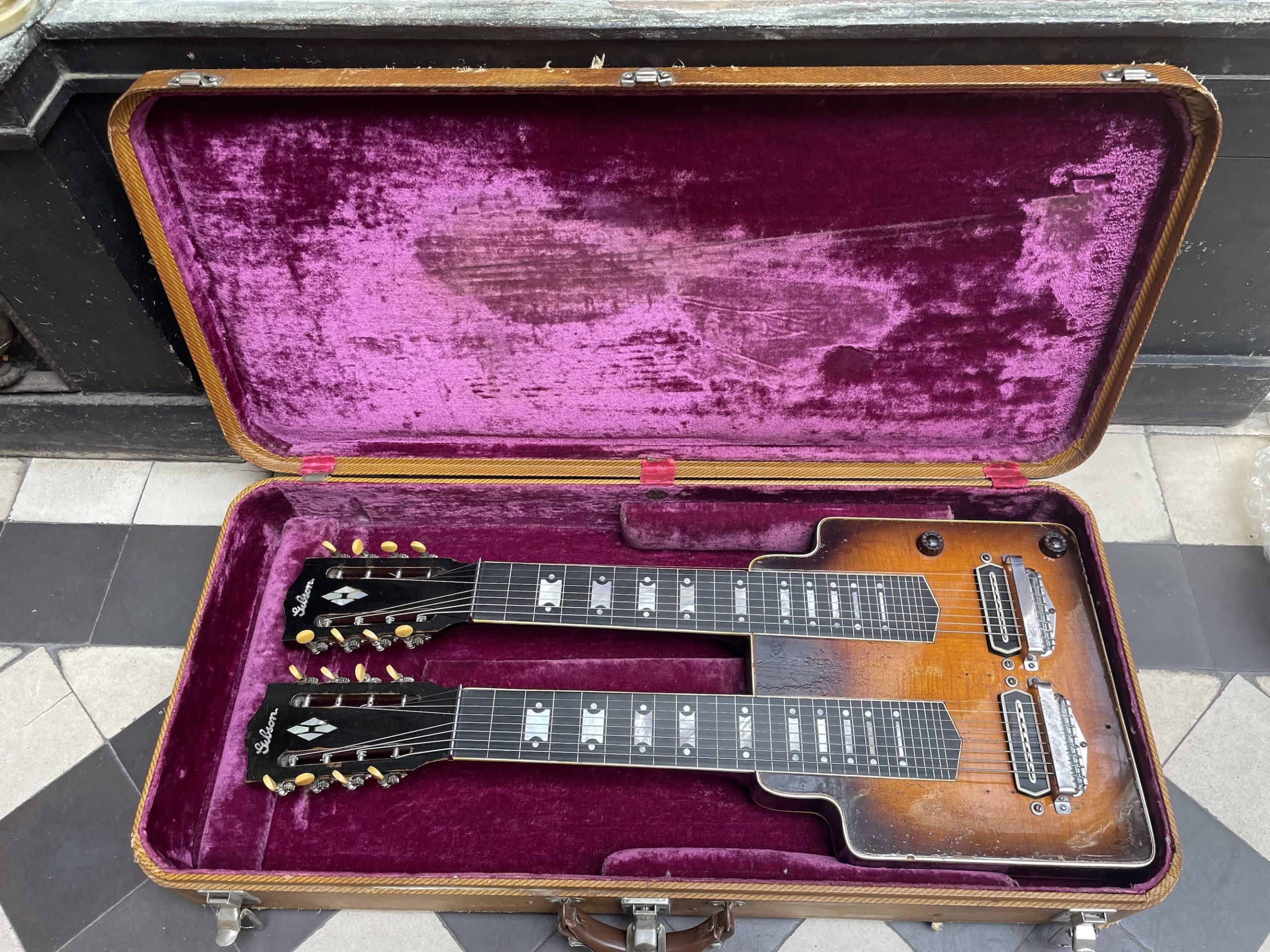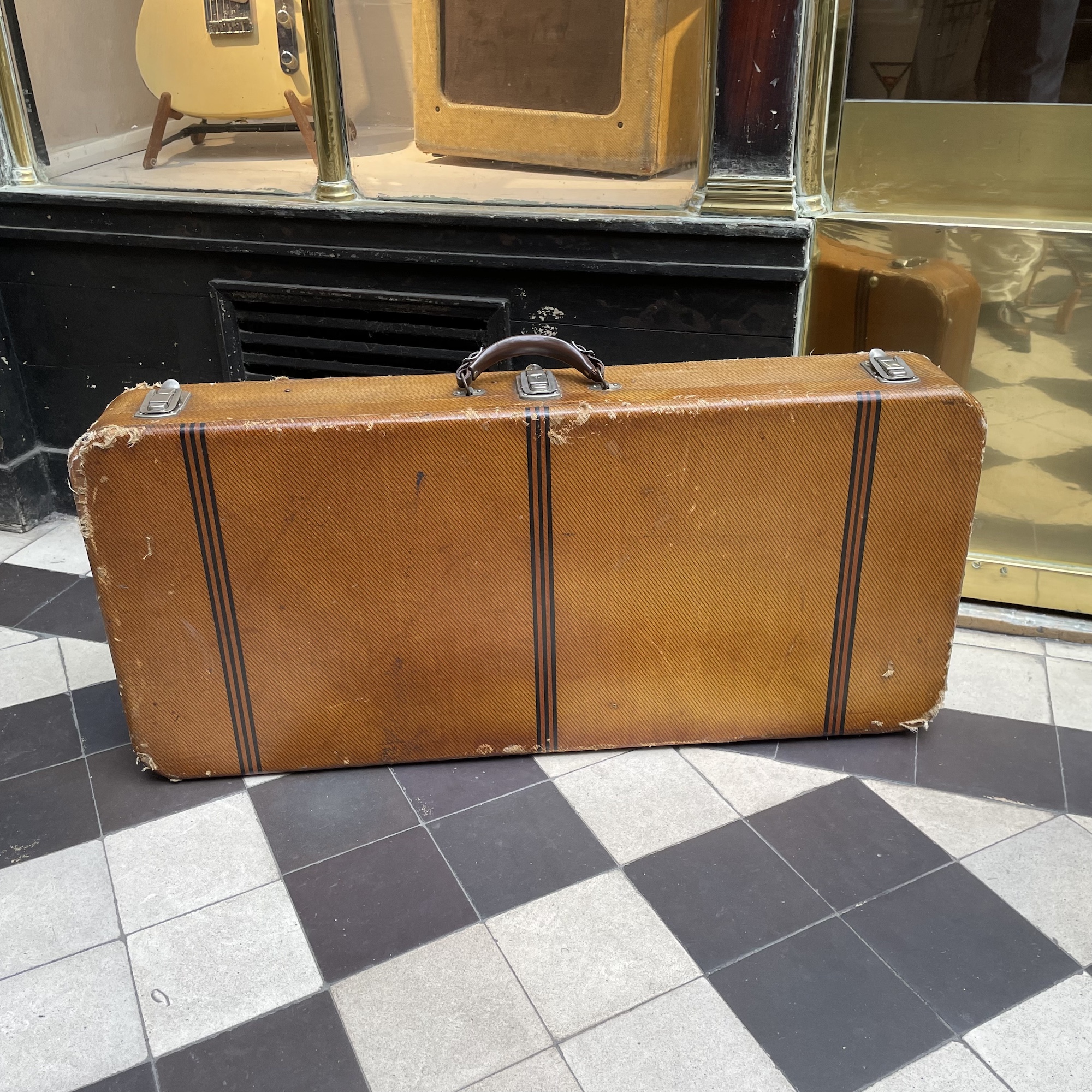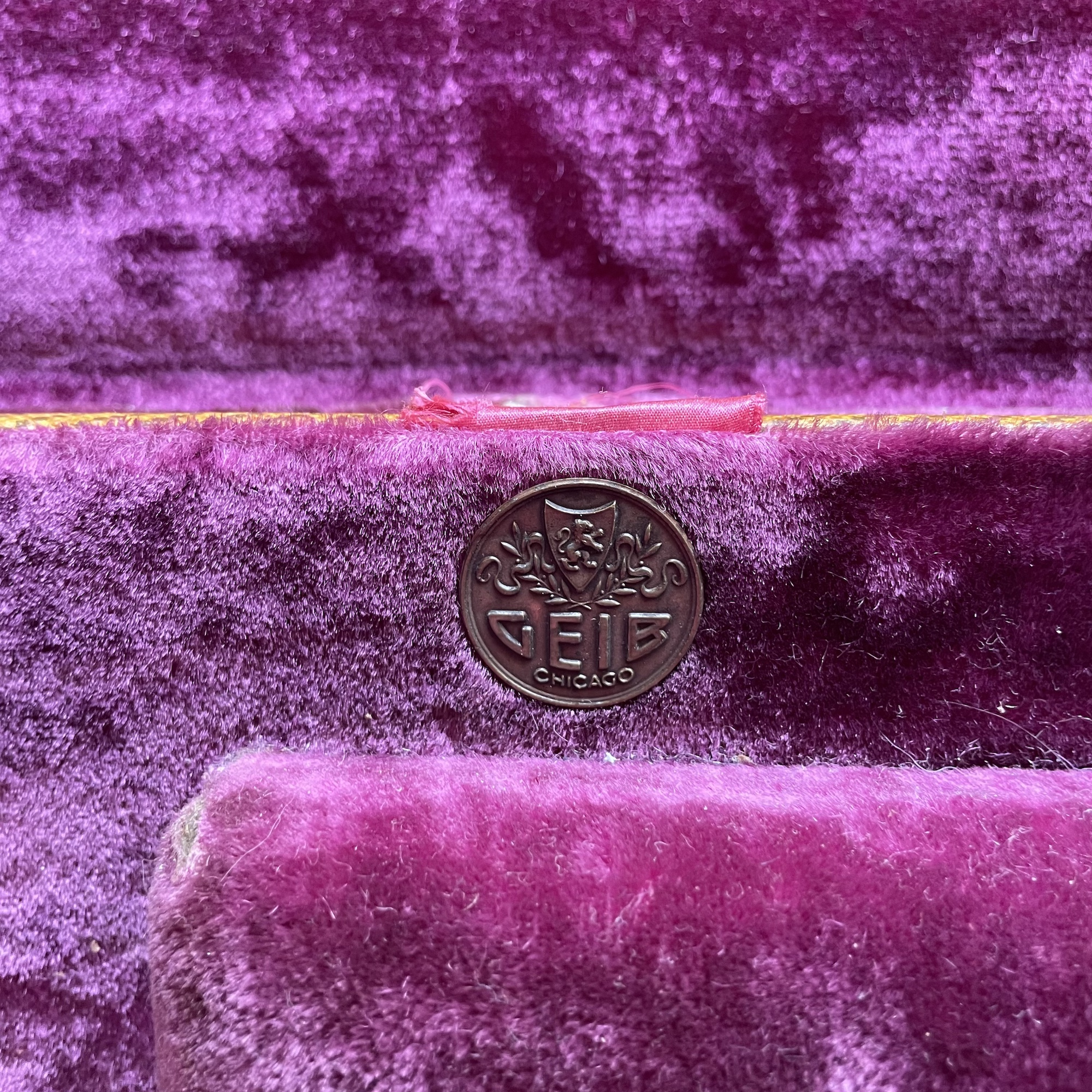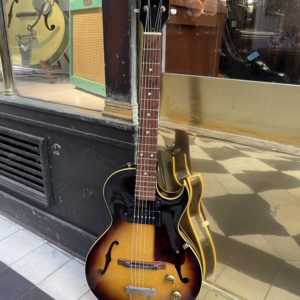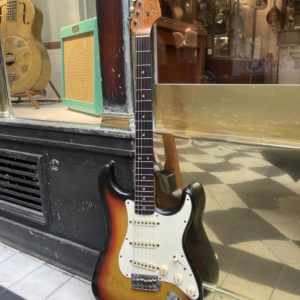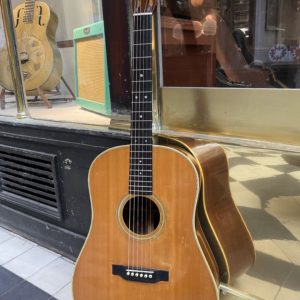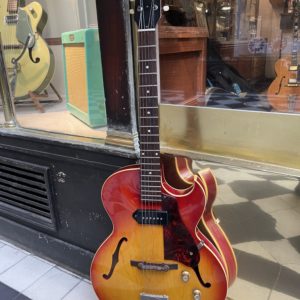1938 GIBSON DOUBLE NECK ELECTRIC HAWAIIAN
The prices indicated correspond to the price in the case of payment in-store or by bank transfer. In the case of payment by credit card via the website, a processing fee of [3.25% + €0.25]* will be applied to the total amount of the basket, including delivery costs.
Extremely rare Gibson Double Neck Electric Hawaiian lapsteel, produced in Kalamazoo around 1938, in very good condition.
When we hear “double neck Gibson”, we are more likely to imagine an EDS-1275 model from the 50s or 60s rather than the guitar with two 8-string necks presented here… which is actually the first expression of this type of instrument, appearing around the same time as the first Gibson electrics produced around the mid-1930s. According to the history of these models traced by André Duchossoir and Lynn Wheelwright, the first orders were made as early as 1936 by musicians needing an instrument with increased flexibility compared to the standard Hawaiian models with 6 or 7 strings, already offered in the catalog.
At the forefront of these developments is the musician Alvino Rey, a renowned multi-instrumentalist who played as a Spanish and Hawaiian guitarist in several orchestras since the beginning of the decade, and who benefitted from a kind ear from the Gibson engineers who willingly integrated his suggestions in improving their burgeoning line of Electric Hawaiians: Rey, perfectly versed in the operation of instrument electronics, was especially well placed to understand the needs of instrumentalists and how to implement them on guitars – he notably contributed greatly to developing the Grande Console, marketed by Gibson from 1938, as well as the Electraharp, the first model using foot pedals to allow tuning to be modulated in real time.
Before these two models, a much more rudimentary solution was offered in the form of the Double Neck Hawaiian Guitar: an instrument with two necks of 6, 7 or 8 strings allowing a configuration with two distinct tunings that could be played simultaneously. After first tests in 1936, the model was introduced in the 1937 catalog as somewhat of a Siamese version of the EH-150. However, being essentially intended for professional musicians, special orders flooded in and quite quickly instruments with sometimes incongruous shapes and characteristics left the Kalamazoo assembly line. The instrument presented here is a choice example, sporting a geometric appearance with art-deco accents which make it particularly recognizable as well as upward facing Grover tuners to facilitate tuning. As noted in André Duchossoir’s book Gibson Electric Steel Guitars, this is one of two guitars ordered by musician Lorry Lee between November 1937 and January 1938, his name appearing in the factory ledgers in front of an order made up of a Double Neck De Luxe H.G. guitar, an EH-150 amplifier and a set of accessories including a stand and a case specially designed for this instrument. Furthermore, Lee appears photographed in the Z and AA catalogs of 1938 and 1939 playing one of his custom guitars – it is impossible to know with certainty whether the instrument appearing in the catalog is the one presented here, but there is in fact a 50/50 for it to be the case!
The instrument comes to us superbly preserved, complete with its two Charlie Christian bar-pickups (these are adjustable in height using two screws on the table and provided with individual poles under each string to enhance individual response), its electronics including a volume control and general tone controls, and its hardware including two chrome bridges, two Bakelite potentiometer knobs, and no less than 16 individual Grover G-18 tuners with pointed ends, typical of the second half of the 1930s. The construction of the body is maple, hollow for the body and solid for the part constituting the necks and headstocks. Double ebony fingerboard decorated with mother-of-pearl inlays. The set is finished in a beautiful black-to-amber Sunburst adorning the top, back, necks and headstocks. The pickup on the first neck has been rewound with the same DC resistance as the original, as the wires on the original coil had suffered from corrosion – the pickup now works perfectly and with an output level equal to that of the second neck. First neck strung for playing in E major, second neck strung for playing in G major – the instrument has been thoroughly checked, cleaned and prepared for playing in our workshop.
To complete this exceptional lot, the lapsteel is sold in its original Geib rectangular case, fitted to the shape of the guitar.
